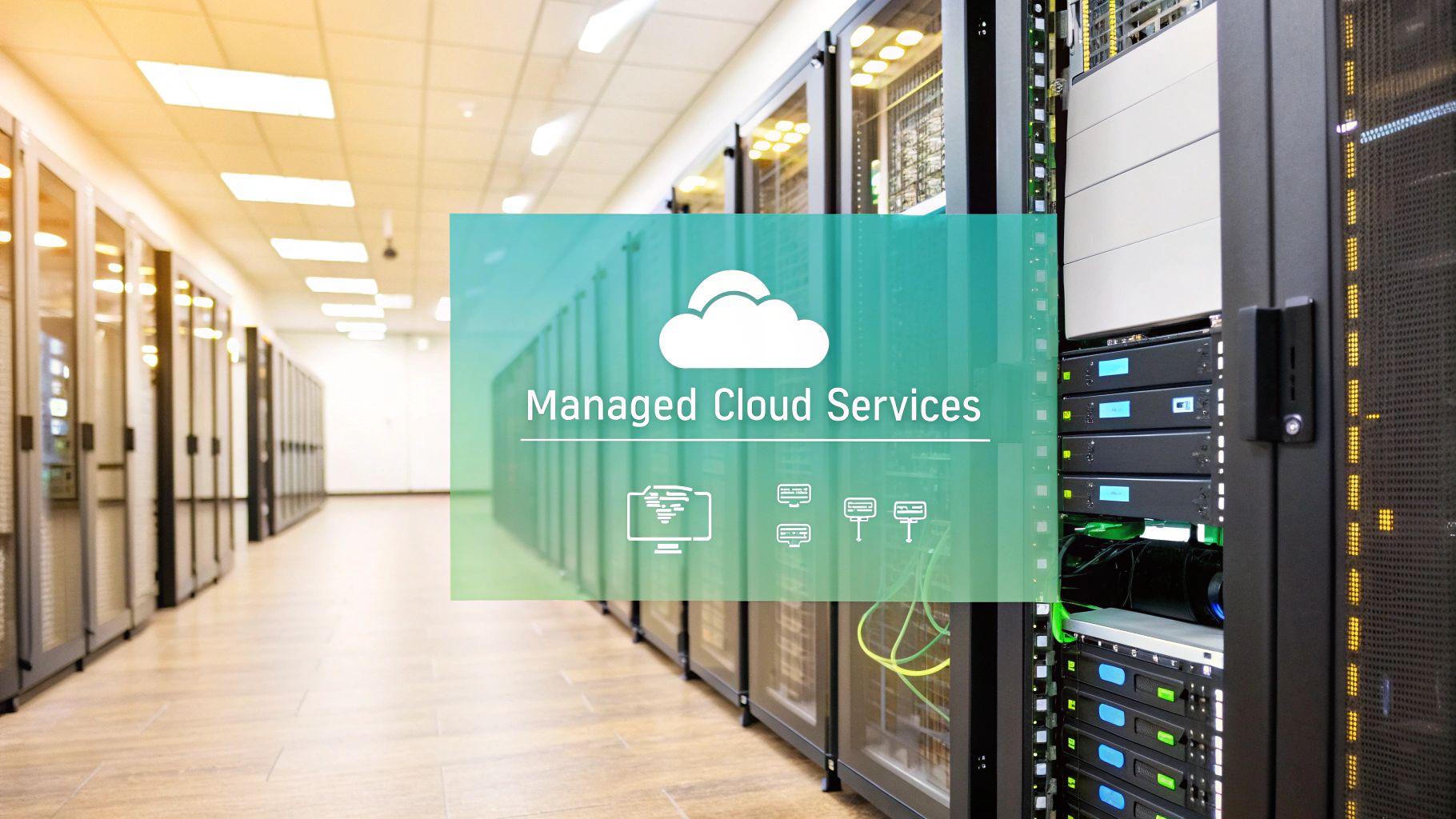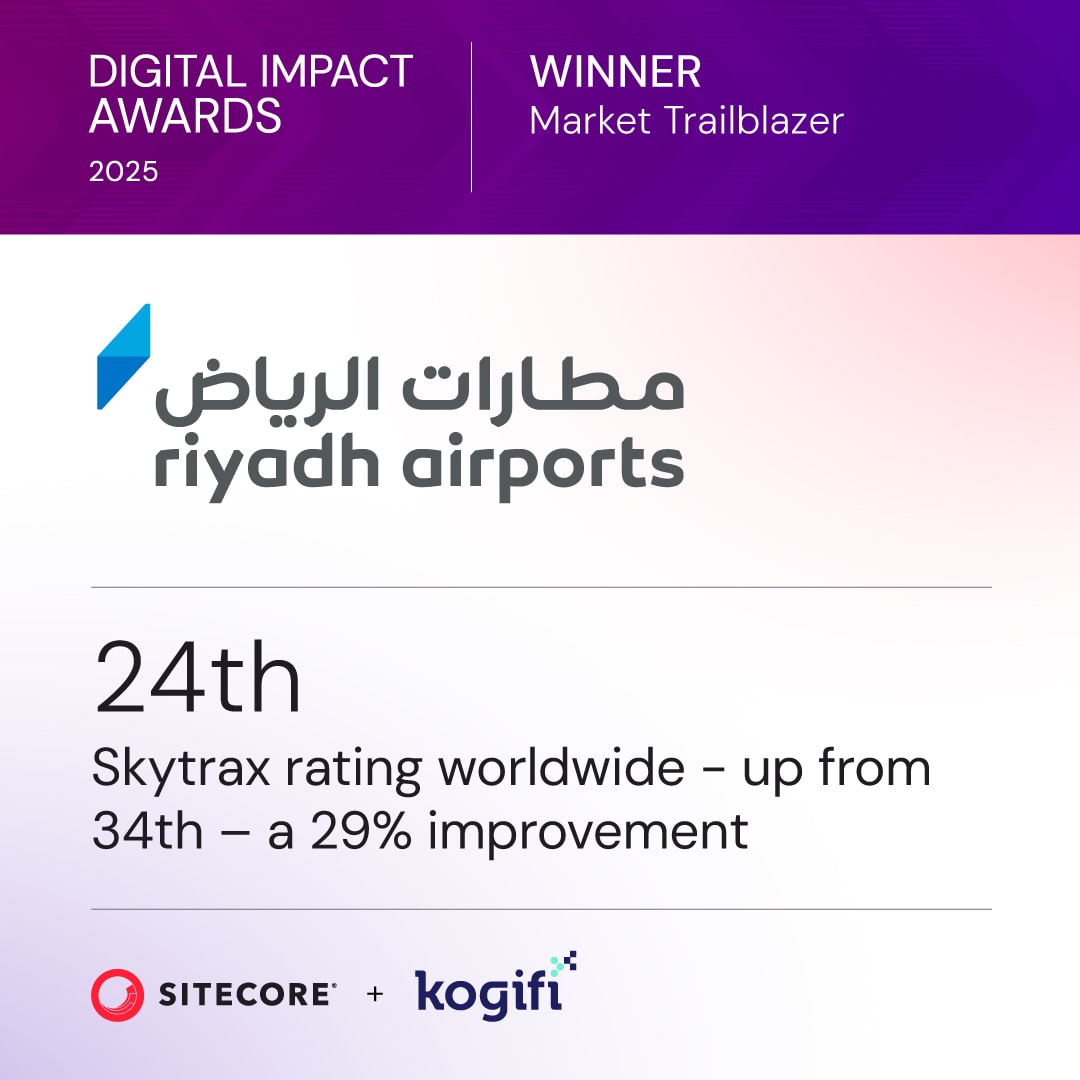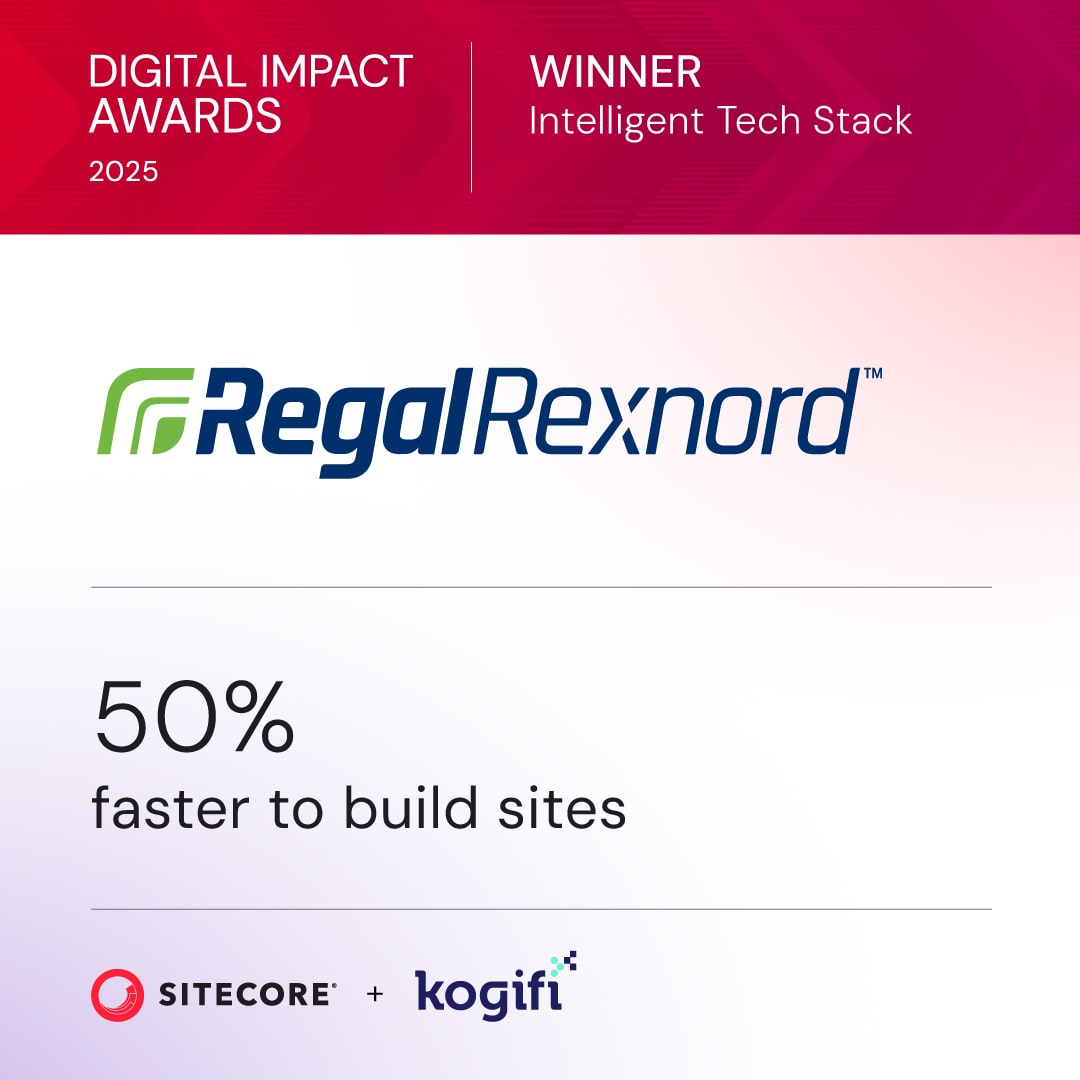AI is reshaping software development to reduce energy use and emissions. As the tech industry faces rising environmental concerns, AI offers solutions to create efficient, low-impact software. Here's how AI contributes:
- Energy-efficient coding: AI tools optimize code to use less power.
- Smarter data centers: AI reduces energy use in cooling and workload management, as seen in Google's 40% cut in cooling costs.
- Carbon-aware computing: Tasks are scheduled during cleaner energy periods or in locations with renewable energy.
- Optimized IT infrastructure: Predictive maintenance and AI-driven systems save energy in operations.
- Cloud efficiency: AI adjusts workloads to minimize power use and emissions.
The tech sector contributes 2-4% of global emissions, rivaling aviation, with data centers alone responsible for 4-5%. By 2040, this could rise to 14%. AI-driven tools are essential to meet these challenges, offering practical ways to lower the carbon footprint of software systems.
AI isn't just reducing emissions - it’s enabling companies to meet ESG goals and align with stricter regulations. With advancements in coding, infrastructure, and energy management, AI is central to building a greener, more efficient digital future.
Green Software Foundation Responsible AI Panel: Tackling AI’s Environmental Challenge

AI Applications Across the Software Development Lifecycle
AI is reshaping every phase of software development, offering ways to cut down energy use and reduce environmental impact. From planning to deployment, AI-driven tools and insights help streamline processes and promote smarter resource management.
AI-Driven Design and Planning
In the design and planning stages, AI plays a key role in helping developers make decisions that align with sustainable software principles. By addressing potential inefficiencies early on, teams can avoid costly mistakes down the line.
One of AI's strengths is its ability to analyze massive datasets, predicting energy needs and optimizing resources. For instance, it can factor in location, climate, energy sources, and other external variables to model energy usage for both existing systems and newer technologies where detailed data is scarce. This helps teams understand the energy impact of their designs right from the start.
AI-powered analytics also highlight energy consumption trends, enabling organizations to set clear sustainability goals and track their progress. Development teams can use these insights to create benchmark models for energy use, using existing data to guide their strategies.
The real-world results are impressive. Research from JLL reveals that retrofitting buildings can cut energy usage by 10% to 40%. Applying similar principles to digital system design can lead to equally impactful energy savings.
"Tackling energy efficiency is the most tangible path to real estate decarbonization, but many building owners lack a clear roadmap. The value of AI lies in its ability to learn the energy demand patterns of building assets and optimize energy distribution." - Ramya Ravichandar, Vice-President of Product Management, Smart Buildings & IOT
Code Analysis and AI Optimization
AI-powered tools are transforming code analysis, enabling developers to identify and fix inefficient coding practices that can lead to excessive energy consumption. These tools go beyond basic debugging, pinpointing performance bottlenecks and unnecessary energy drains.
One example is ACPO (AI-Compiler-Optimized Program), which integrates machine learning into compilers to boost program performance, achieving up to a 4.5% improvement in benchmark tests. Similarly, AI tools embedded in IDEs can flag inefficient code, suggest real-time improvements, and even refactor older code to enhance energy efficiency. They also monitor code execution to identify structural issues and improve readability.
Snyk's DeepCode takes this further by using machine learning and natural language processing to perform static code analysis. It detects bugs, security vulnerabilities, and complex issues that are hard to catch manually, offering actionable recommendations to improve code quality.
"AI-driven code optimization is not just about writing faster code; it's about writing smarter, cleaner, and more maintainable code. By integrating AI tools into your workflow, you can enhance productivity, reduce bugs, and focus more on innovation." - Scheila Farias Silveira, International Marketing Leader, Ubiminds
In South Korea, researchers have developed hardware capable of dynamically altering its architecture, mimicking the brain's ability to reconfigure synaptic connections. This innovation has resulted in a 37% reduction in energy use compared to current neural network setups. Such advancements show how optimized code naturally leads to more efficient deployment processes.
AI for Deployment and Maintenance
AI continues to deliver benefits during deployment and maintenance by predicting hardware failures and scheduling proactive maintenance. These capabilities not only minimize downtime but also help save energy by preventing emergency repairs.
For example, AI algorithms can analyze usage patterns to optimize cooling and power systems in data centers, leading to significant energy savings. Cities like Singapore and Amsterdam are already using AI-driven systems to adjust streetlight brightness based on real-time traffic and pedestrian activity. Similarly, metro systems employ predictive maintenance to reduce unnecessary train movements, further cutting energy use.
AI-powered tools also enhance system resilience, ensuring a consistent power supply. Smart grids in Germany and the U.S. have shown how AI can optimize energy distribution. Additionally, AI models can dynamically adjust their complexity based on available energy and computational demands. Teams can even schedule energy-intensive tasks, like AI training, during times when renewable energy is at its peak.
"AI will increasingly be a differentiating factor in bringing buildings, infrastructures, and industries to their maximum energy efficiency." - SENER Group
However, it's worth noting that AI's own energy demands are growing rapidly. According to Goldman Sachs, AI-related energy usage could rise by 160% by 2030. Training GPT-4 alone consumed over 50 GWh of electricity - 38 times more than GPT-3's 1,300 MWh. This highlights the need for efficient deployment and maintenance strategies to ensure AI's sustainability.
AI also plays a critical role in monitoring energy use in data centers and IT infrastructure. By combining energy-efficient hardware with real-time tracking tools, organizations can make smarter decisions about resource allocation and achieve continuous optimization across the software lifecycle.
Key AI Strategies for Reducing Software's Carbon Footprint
AI is transforming the way software is developed and operated, focusing on reducing energy consumption and carbon emissions. From smarter coding to optimizing cloud resources and IT infrastructure, these strategies aim to make software more eco-friendly.
Energy-Efficient Coding Practices
AI tools can identify coding patterns that consume excessive energy and suggest better alternatives. For instance, using sparse models instead of dense ones can reduce computational requirements by 5 to 10 times.
Model optimization plays a big role in energy savings. Take DistilBERT as an example - it retains 97% of BERT's performance but uses 40% fewer parameters and offers 60% faster inference. Similarly, pruned models maintain 90% accuracy while using just 10% of the original parameters.
Other techniques like LoRA can shrink trainable parameters by 10,000× and cut GPU memory usage by 3×. For large language models, FrugalGPT uses cascaded architectures to either match GPT-4’s performance with up to 98% cost savings or boost accuracy by 4% at the same cost.
"By predicting the final, converged model performance from only a few initial epochs of training, early stopping [of slow-converging models] saves energy without a significant drop in performance."
Early stopping during training can save 80-90% of energy by optimizing hyperparameters without fully training the model. Another tactic, power-capping, reduces energy use by an average of 13.7%, with only a 6.8% increase in training time.
Even hardware choices matter. For instance, GPT-Neo 1.3B uses only 27% of the energy compared to GPT-J 6B while delivering similar-quality results.
| Optimization Technique | Type | Energy Benefits | Use Cases |
|---|---|---|---|
| Task-Specific Models | Model Design | Cuts training time and computational load | Text summarization, recommendations |
| Low-Compute Power Models | Model Design | Efficient for edge devices, saves energy | IoT devices, TinyML applications |
| Fine-Tuning Architectures | Model Optimization | Boosts performance with minimal retraining | Domain-specific tasks |
| Pruning | Model Optimization | Reduces model size and computational needs | Deep learning deployments |
| Quantization | Model Optimization | Lowers precision to reduce compute demand | Edge AI, large-scale inference |
AI in Cloud Resource Management
AI doesn’t just improve coding - it also optimizes cloud resource usage. For example, Microsoft uses AI to dynamically schedule workloads, allowing servers to enter low-power states during off-peak times, cutting unnecessary energy consumption.
Meta applies AI in its data centers to manage operations more effectively. Their AI models analyze factors like heat, emissions, and airflow to prevent unsafe conditions while maximizing energy efficiency.
The CLOVER system, created by MIT and Northeastern University, integrates carbon intensity into computing decisions. By adjusting workloads based on energy availability, CLOVER achieves over 75% carbon emission reductions with minimal accuracy loss of 2-4%.
"There isn't a huge [capital expenditure] investment you need to make to cut down on energy emissions. You can employ some of these techniques and cut your operating expenses." - Vijay Gadepally, Senior Scientist and Principal Investigator at MIT Lincoln Laboratory
Another effective approach is workload shifting, where AI schedules tasks during off-peak energy periods or moves them to regions with renewable energy availability. This strategy balances energy demand while maximizing renewable energy use.
The stakes are high. Data centers currently consume 1-2% of global energy, rivaling the airline industry. Without intervention, this could rise to 21% by 2030 as AI-driven services grow.
Optimizing IT Infrastructure with AI
Beyond coding and cloud strategies, AI also enhances IT infrastructure for better sustainability. Predictive maintenance and intelligent systems help optimize energy use. For instance, AI-driven cooling systems have significantly reduced energy costs.
Huawei used predictive analytics to improve power usage efficiency (PUE) in its China data centers, cutting energy consumption by nearly 8%. Similarly, GreenTech Innovations launched an AI-powered energy management system in 2015, helping buildings reduce energy use by an average of 30%.
AI also improves water management. In 2019, AquaIntelligence deployed IoT sensors to monitor water usage and detect leaks in real-time. Municipalities reported a 40% drop in water leakage, while farms optimized irrigation, reducing water use by up to 25%.
"To make AI sustainable, he emphasized the need for proactive solutions - streamlining AI models, developing greener infrastructure, and fostering collaboration across disciplines." - Mahmut Kandemir, Distinguished Professor in the Department of Computer Science and Engineering, Penn State
The urgency for infrastructure optimization is clear. Data centers accounted for 4% of U.S. electricity use in 2023, and this could triple by 2028. By 2030-35, they could use up to 20% of global electricity.
Renewable energy integration is critical to reducing the carbon footprint of AI infrastructure. Transitioning to solar and wind energy, along with scheduling computations to align with renewable energy peaks, can make data centers more sustainable.
sbb-itb-91124b2
Measuring and Tracking Sustainability in Software Development
Understanding and monitoring the environmental impact of software development hinges on precise metrics and automated systems. These tools are key to evaluating and improving green initiatives.
Introduction to Sustainability Metrics
Sustainability metrics in software development focus on evaluating the environmental impact and long-term viability of software. Four primary areas come into play: resource utilization, energy efficiency, maintainability, and scalability. Among these, CO₂-equivalents stand out as a critical measure, capturing total greenhouse gas emissions. Other important metrics include electricity usage, carbon accuracy, and Universal Sustainability Metrics.
The Green Software Foundation is also working to expand the Software Carbon Intensity (SCI) specification, tailoring it to address the unique challenges posed by AI systems.
"Green AI focuses on reducing the environmental impact of AI systems throughout their lifecycle. It emphasizes the standardization of measurement and metrics to ensure transparency, strengthen confidence in AI technologies, and drive continual improvement." - Green AI Committee (GAIC)
The scope of the issue is significant: around 85% of software-related emissions stem from design decisions made during development. This highlights the opportunity for developers to adopt more eco-friendly coding practices. Additionally, server location is a crucial factor in emissions calculations. By considering where infrastructure operates, developers can make choices that further reduce their carbon footprint.
AI-powered analytics provide the tools to take these measurements and turn them into actionable insights, simplifying the process and enhancing efficiency.
AI-Powered Analytics for Sustainability
AI has revolutionized sustainability tracking, turning what was once a tedious, manual process into an automated and precise system. By analyzing data, uncovering patterns, and making predictions, AI-powered tools help optimize energy consumption.
For instance, Verdigris Technologies uses AI to monitor data from electrical panels, predicting equipment failures to cut downtime and maintenance costs while improving energy efficiency. AI can also identify inefficiencies in source code, such as "code smells", that increase computational demands. Developers can then refactor the code to reduce energy usage. Beyond software, AI can adjust office energy consumption by analyzing occupancy and weather, optimizing lighting and temperature settings. It can even predict peak energy demand, shifting non-essential operations to off-peak hours when renewable energy is more available, while helping optimize renewable energy production by analyzing environmental factors.
Comparing Sustainability Metrics
Different sustainability metrics serve distinct purposes, and AI enhances their accuracy and usefulness. Here's a breakdown of how AI contributes to these metrics:
| Metric | Description | How AI Can Enhance |
|---|---|---|
| Resource Utilization | Tracks CPU, memory, and bandwidth usage | AI predicts usage patterns and optimizes resource allocation |
| Energy Efficiency | Measures energy consumption relative to performance | AI identifies energy-intensive processes and suggests improvements |
| Maintainability | Evaluates the ease of updating and modifying software | AI detects code complexity and recommends refactoring |
| Scalability | Assesses the software's ability to handle increased demand | AI forecasts load increases and automates scaling |
Hardware and algorithm decisions also play a significant role in sustainability. For example, CPUs are far less energy-efficient than GPUs, while TPUs offer even greater efficiency - up to 8× higher. Similarly, algorithm choices matter; a K-Nearest Neighbor (KNN) algorithm is more energy-efficient than a Random Forest.
"We need transparent, robust methods to assess AI's environmental impacts. Accurate quantification is essential to mitigate these challenges." - Yuan Yao, Associate Professor of Industrial Ecology and Sustainable Systems
A real-world example of comprehensive tracking is Meta's sustainability program, which achieved carbon neutrality for its Llama 2 model by offsetting 100% of its emissions. This required detailed measurement of the model's entire lifecycle, from training to deployment.
Real-time monitoring is a game-changer. Standardized efficiency metrics combined with automated tools provide continuous insights into environmental impact. AI systems can predict energy usage trends, while IoT devices track and manage consumption in real time.
The need for precise tracking is clear. For example, every query sent to ChatGPT results in about 4.32 grams of CO₂e emissions. From 2019 to 2023, AI's rapid growth has driven a 72% increase in data center power consumption. Without accurate monitoring, these figures are only set to climb.
Best Practices for Implementing AI-Driven Green Software Development
Implementing AI-driven green software development isn’t just about technical know-how - it’s about committing to sustainability at an organizational level. Companies that combine AI with sustainable practices report 43% higher profits. Beyond financial gains, these efforts significantly reduce energy consumption and shrink the software industry’s carbon footprint.
Steps to Adopt AI for Green Development
The journey toward greener software development begins with setting clear sustainability goals that align with environmental priorities. Early in the process, it’s crucial to define measurement criteria to track progress and ensure accountability.
Adopting an agile, lean framework can help structure this transformation. Start by assessing the maturity of Green AI practices in current projects to pinpoint areas for improvement.
A cornerstone of green AI is energy estimation. Companies should use tools that are non-invasive, work across various vendors, and offer comprehensive hardware insights. Real-time monitoring during development, such as dynamic code analysis, can identify energy-draining modules for optimization.
Programming choices also matter. Switching from Python to languages like C or Rust can cut energy use by up to 50 times. Similarly, selecting efficient frameworks makes a difference - Fastify, for instance, handles about 47,038 requests per second, far outpacing Express at 9,999 requests per second.
Focusing on high-energy consumption features is another critical step. This includes reducing data usage with efficient caching, minimizing data exchanges, and removing unused features.
Using pre-trained models instead of training new ones from scratch is a game-changer. Research from Accenture Labs shows that training a model on just 70% of the dataset reduced accuracy by less than 1% but slashed energy use by 47%.
Cloud optimization also plays a role. Scheduling AI workloads based on server locations and renewable energy availability can significantly lower emissions.
These technical practices must be paired with skill development and collaboration to ensure lasting success.
Collaboration and Skill Development
At the heart of any successful AI initiative are the people driving it. While 64% of CEOs believe that AI success depends more on people than technology, only 22% of executives have integrated AI training into their professional development plans.
Leadership must take the lead. Executives should actively explore AI tools and stay informed about advancements to guide their teams effectively. Upskilling is vital - 51% of business leaders identify it as the key to boosting productivity. With AI and automation expected to require reskilling for 40% of the global workforce by 2026, this is more urgent than ever.
"CEOs lead the AI transformation by setting a clear roadmap and objectives and fostering a company culture that embraces AI." - Susan Youngblood, Bessemer Operating Advisor
Training programs should be tailored to specific roles and use cases. Combining self-paced courses, hands-on projects, instructor-led sessions, and mentorship creates an effective learning path.
Cross-departmental collaboration is equally important. Involving tech leaders in planning upskilling initiatives ensures alignment across teams. Encouraging employees to experiment with AI tools, share feedback, and contribute ideas fosters a culture of innovation.
Knowledge-sharing systems and mentorship programs can further accelerate learning. When AI skills are integrated into daily tasks, they become immediately relevant and impactful.
"When AI learning is woven into the work itself, it becomes relevant and immediately valuable. This approach accelerates capability building, reinforces new ways of working, and ensures investments in AI upskilling translate into measurable business outcomes." - Susan Youngblood
Real-world examples show how these strategies lead to both sustainable practices and business success.
Examples and Case Studies
Real-world applications of AI-driven green development demonstrate its potential across industries.
Google's DeepMind offers a striking example of energy optimization. By using AI to manage data center cooling, Google reduced energy usage by 40%. Their carbon-intelligent computing system further enhances sustainability by scheduling energy-intensive tasks when renewable energy is most accessible.
BrainBox AI showcases AI’s ability to optimize building operations. Their autonomous solution integrates with existing HVAC systems, cutting HVAC energy costs by up to 25% and reducing related greenhouse gas emissions by up to 40%.
In supply chain management, Pendulum's AI-powered API predicts demand, optimizes supply, and tracks assets, helping clients achieve a 92% reduction in excess inventory, which minimizes waste and environmental impact.
The retail sector also benefits from AI innovations. Mobiry's platform connects to retailers’ data systems, synchronizing inventory and sales information in real time. This approach addresses the alarming statistic that 31% of the U.S. food supply is wasted annually.
At an organizational level, CMA CGM demonstrates the importance of upskilling. Their CEO, Rodolphe Saadé, actively supported their AI skills accelerator program, fostering a culture of continuous learning. Senior managers participated in sessions, driving AI adoption across the company.
Industrial applications highlight even broader energy savings. AI can cut energy use in smart building management by up to 30% and reduce industrial process energy consumption by 20-30%. In renewable energy, AI boosts wind farm output by up to 20% and improves solar panel efficiency by 10-15%.
"The environment and the economy are really two sides of the same coin. If we cannot sustain the environment, we cannot sustain ourselves." - Wangari Maathai
These examples underline the importance of a comprehensive approach to AI-driven green development, involving everyone from leadership to developers. Companies that embrace these strategies see measurable improvements in both sustainability and business outcomes.
Conclusion and Future of AI in Green Software Development
The combination of artificial intelligence and sustainable software development stands as a powerful tool in reducing the environmental footprint of technology. As highlighted in this guide, green software development powered by AI isn't just a nice-to-have - it’s becoming a necessity for driving sustainable digital progress. AI plays a central role in this transformation.
Key Takeaways
The results speak for themselves: AI-driven green software development is delivering tangible benefits. The global market for green technology and sustainability is expected to hit $134.9 billion by 2030. This growth underscores the urgent need for smarter, eco-conscious solutions to reduce the environmental impact of software systems.
Take Google's DeepMind initiative, for instance. It slashed data center cooling energy use by 40%. Similarly, AI is helping smart buildings cut energy consumption by up to 30%, while precision farming technologies are reducing water and fertilizer usage by 20% to 40%. These examples show how AI is already making a difference across different sectors.
Collaboration and skill-building are key to success. Companies that prioritize training their teams and encourage collaboration across departments see the best outcomes. For example, the European Space Agency’s Climate Change Initiative leverages AI to process data from over 700 satellites, aiding climate change predictions and supporting the European Union’s carbon neutrality goals for 2050.
Another critical factor is robust data governance. Effective measurement frameworks ensure that sustainability initiatives are data-driven rather than based on assumptions. Without proper data tracking, efforts to achieve greener software development can fall short of their potential.
These advancements set the stage for an even more significant role for AI in driving environmental sustainability in the years to come.
The Future of AI and Green Software
While today’s AI applications are already delivering real-world sustainability benefits, the future holds even greater promise. Projections suggest that AI could cut global greenhouse gas emissions by 4% by 2030. To put that into perspective, that’s about 2.4 gigatons of CO₂ - equivalent to the combined annual emissions of Canada, Australia, and Japan.
Emerging trends include standardizing carbon reporting for AI model training and using carbon APIs to optimize compute locations based on renewable energy availability. Governments may soon require carbon disclosures for digital services, making green software practices not just a choice but a regulatory obligation.
The shift toward smaller, more efficient AI models is another exciting development. These models use less computational power while maintaining high performance. Alongside this, advancements in energy-efficient algorithms and eco-friendly hardware are accelerating, driven by both environmental concerns and cost-saving incentives.
Education and workforce development are also evolving. Incorporating green software principles into computer science and IT curricula is becoming increasingly important. According to PwC’s 2024 Global Investor Survey, 64% of investors back increased spending to reduce carbon emissions, highlighting the growing demand for professionals trained in sustainable AI practices.
It’s worth noting that while AI can help reduce environmental impact, it also has the potential to contribute to it. This makes responsible development practices essential. Companies are focusing on creating AI solutions that are both fair and environmentally conscious, balancing innovation with sustainability.
"We all share a planet. I think that's true for AI." - Sundar Pichai, CEO of Google
Industries are increasingly adopting technologies like IoT, AI, and big data to manage and lower carbon emissions. This collaborative approach is fostering the exchange of best practices and innovative strategies to minimize AI’s energy consumption.
The future belongs to organizations that embed sustainability into every aspect of their AI-driven software development. By adopting energy-efficient coding, optimizing cloud usage, and prioritizing sustainability at every stage, companies can lead the way toward a greener digital landscape.
As AI continues to advance, its role in supporting environmental goals will only grow. The real question isn’t whether AI will shape green software development - it’s how quickly businesses can adapt and fully embrace its potential for a more sustainable future.
FAQs
How does AI help data centers become more energy-efficient and environmentally friendly?
AI is transforming how data centers manage energy, making them more efficient and environmentally friendly. One standout application is intelligent cooling systems. These systems use AI to monitor conditions and adjust cooling levels in real-time, ensuring temperatures stay optimal without wasting energy.
Another key area is predictive maintenance. AI can spot signs of potential equipment issues early, helping prevent breakdowns. This not only cuts down on costly downtime but also avoids unnecessary energy use.
AI also improves workload distribution by efficiently allocating tasks across servers. This ensures resources are used wisely, reducing overall power consumption. Together, these innovations significantly cut greenhouse gas emissions, paving the way for greener, more efficient data centers.
How can AI help reduce energy consumption in software development?
AI is transforming how software development tackles energy efficiency. By analyzing and fine-tuning code, AI tools can pinpoint sections where energy use can be trimmed. These tools also monitor software performance in real time, spotting inefficiencies and offering suggestions to cut down on energy waste.
On top of that, AI can take over resource management tasks, ensuring hardware and computational resources are used efficiently. This not only helps lower energy consumption but also supports more environmentally conscious development practices. With its ability to process massive datasets and predict energy needs, AI paves the way for smarter, greener approaches in modern software systems.
How can AI help organizations meet their ESG goals and comply with environmental regulations?
AI is transforming the way organizations tackle Environmental, Social, and Governance (ESG) goals and adapt to stricter environmental regulations. By automating climate-related reporting and enhancing data precision, AI ensures that ESG disclosures are both reliable and consistent. It also delivers predictive insights and highlights potential risks, empowering businesses to make informed decisions that can lower their environmental footprint.
AI-powered tools also play a critical role in tracking compliance with changing ESG standards. They help organizations stay ahead of regulatory requirements while demonstrating a strong commitment to sustainability. These technologies not only assist with meeting legal obligations but also help position companies as forward-thinking leaders in environmental responsibility.








































